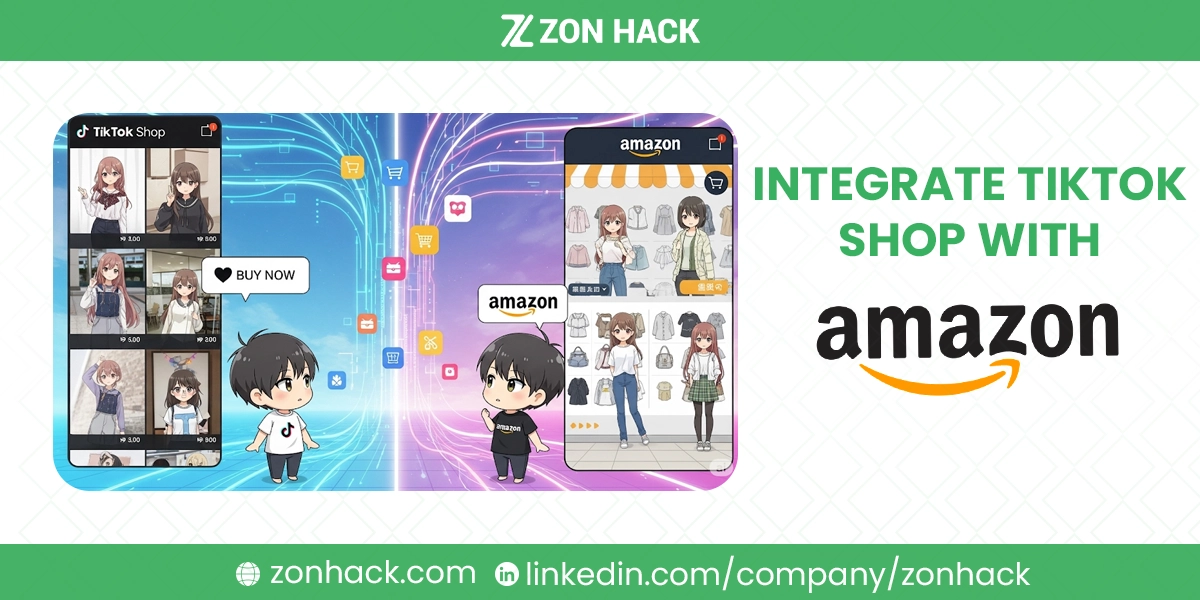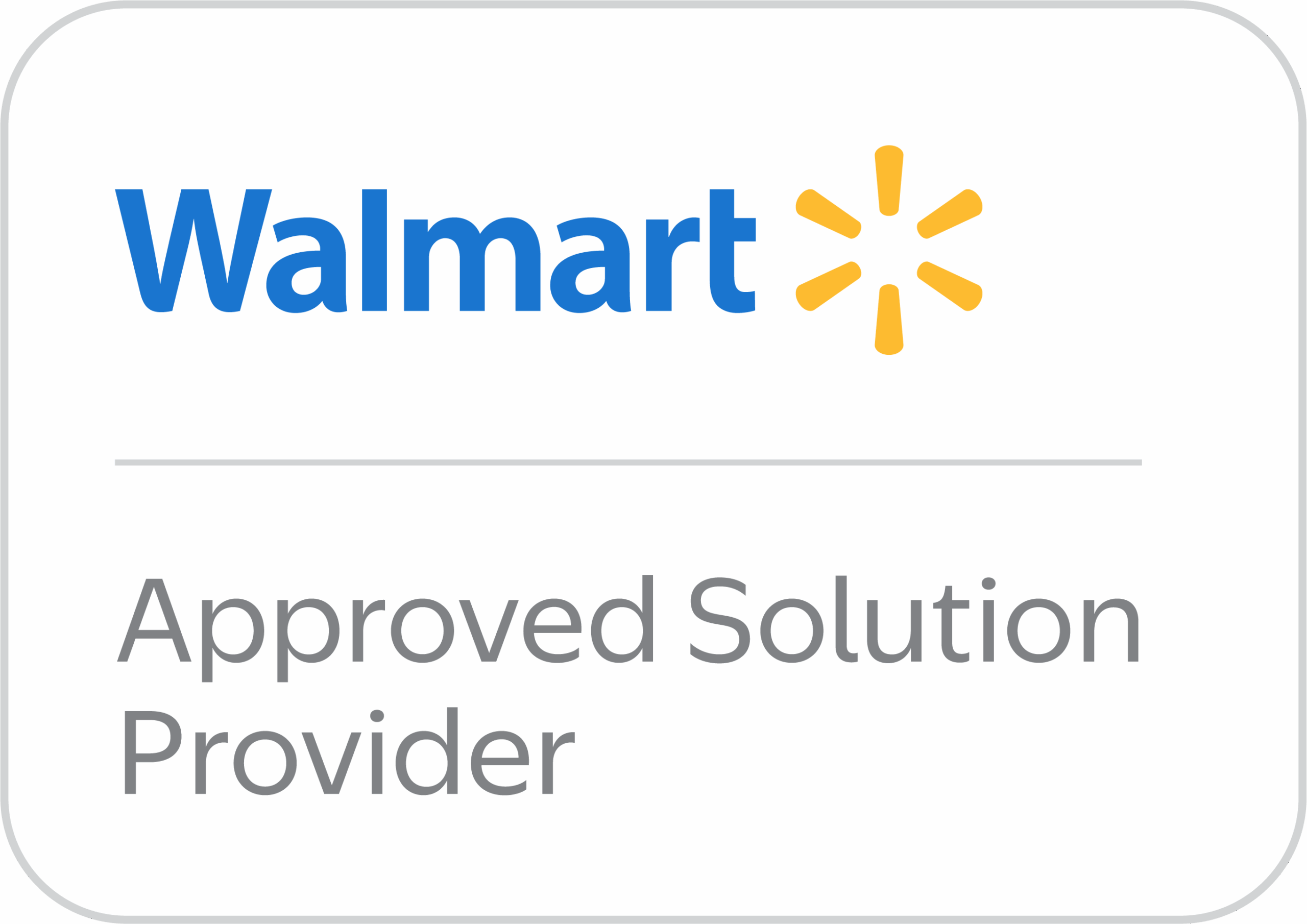If you’re selling on Amazon and haven’t explored TikTok Shop yet, you might be leaving money on the table. TikTok has exploded as a social shopping hub, and combining it with the power of Amazon could be a total game changer.
Whether you want to show off your Prime shipping badge on TikTok or just automate your inventory between both platforms, there’s no direct way to integrate TikTok Shop with Amazon just yet. But don’t worry—there are plenty of smart workarounds that can help you get the job done. Some are plug-and-play; Others take a bit more elbow grease—but hey, that’s business.
Let’s break it all down in simple steps.
Way 1 – Direct Integration via Amazon Ads
Okay, let’s kick things off with what I like to call the “official handshake” between TikTok and Amazon. This isn’t about moving your whole store from one place to another. Instead, it’s a focused way to use TikTok’s ad power to drive traffic and sales specifically for your Amazon listings. It’s pretty neat, actually!
TikTok Ads has gotten cozy with Amazon’s Buy with Prime and Multi-Channel Fulfillment (MCF) programs. What does this mean for you, the seller? It means you can run ads on TikTok that proudly show off Amazon’s delivery promises and even that familiar Prime branding. Imagine a TikTok user scrolling through their “For You” page, seeing your super engaging product video, and then spotting that “Prime” badge. Instant trust, right?
The setup for this is quite streamlined. First, you’ll need to log into your Buy with Prime Marketing console. From there, you’ll look for and add the “TikTok Ads for Buy with Prime” app. It’s usually a pretty straightforward process. You’ll then authorize TikTok to access the necessary data – don’t worry, it’s all about making sure your ads show the right info. Finally, you connect and authorize your TikTok For Business account. Once that’s done, your TikTok ads can now display those sweet Amazon perks, giving potential customers an extra nudge to buy. It’s a fantastic way to blend the excitement of social media with the reliability of Amazon.
Way 2 – Third-Party Integration Tools
Now, if you’re thinking, “That’s cool for ads, but what about syncing my actual products and orders?” – then third-party integration tools are your new best friends. These are the unsung heroes that build bridges between your TikTok Shop and your Amazon Seller Central account. They’re like the master orchestrators, making sure everything runs smoothly behind the scenes.
We’re talking about services like Pipe17, AfterShip, WebBee, LINGXING, or Connector by Silk. These tools are designed to automate a whole bunch of tasks that would otherwise drive you nuts. Think about it: order fulfillment, inventory management, and getting real-time order status updates. Manually doing all of that for two different platforms? No thanks!
Let me give you a quick peek at how one of these, say Pipe17, might work. First, you’ll need to make sure Pipe17 has full control access for various fulfillment and inventory programs on your Amazon Seller Central. This sounds technical, but it’s usually a guided process. Once that’s set, you configure Pipe17 to “pull” your products from Seller Central. This means it grabs all your product details – images, descriptions, pricing – from Amazon. Then, you tell it to “push” those products to TikTok. Voilà! Your items appear on your TikTok Shop without you having to re-enter every single detail.
But it’s not just about listing. The real magic happens when an order comes in on TikTok Shop. These tools can automatically send that order straight to Amazon MCF (Multi-Channel Fulfillment) if you’re using FBA. Amazon then handles the picking, packing, and shipping, just like they would for an Amazon order. And the best part? The tracking information from Amazon automatically gets sent back to your TikTok Shop order, keeping your customers happy and informed. It’s like having a super-efficient assistant working 24/7!
Way 3 – Manual Product Listing
Alright, so maybe you’re just dipping your toes into TikTok Shop, or you have a very specific set of products you want to feature. In that case, or if the idea of a third-party tool feels a bit overwhelming right now, you can always go the old-fashioned route: manual product listing. It’s straightforward, though it does require a bit more elbow grease from your end.
This method means you’ll be logging into your TikTok Shop Seller Center and adding each product one by one. You’ll input all the product details manually, just like you would when setting up a new listing on any e-commerce platform. This includes uploading images (make sure they’re eye-catching for TikTok’s visual audience!), writing compelling product descriptions, and setting your pricing.
The upside here is that you have complete control. You can tailor your product descriptions and images specifically for the TikTok audience, perhaps using a more casual or trend-focused language than you might on Amazon. You can also adjust pricing strategies to account for different fee structures or to run TikTok-specific promotions. The downside, as you can probably guess, is the time commitment. If you have a huge catalog on Amazon, this might not be the most scalable solution. But for a curated selection or just to get started, it’s a perfectly valid way to get your Amazon products on TikTok. It’s like crafting each piece of art by hand – more effort, but sometimes worth it for that personal touch.
Way 4 – Dropshipping
Now, let’s talk about an interesting, low-risk way to leverage both platforms: dropshipping. This is a model that a lot of folks love because it means you don’t have to hold any inventory yourself. It’s quite clever, really, and can be a great way to test the waters with new products or simply run a business with minimal upfront investment.
Here’s how it works if you’re using Amazon for your source. You list products from Amazon on your TikTok Shop. You essentially act as the storefront on TikTok. When a customer sees your amazing video, falls in love with the product, and places an order on your TikTok Shop, that’s when the magic happens. Instead of shipping it yourself, you then go to Amazon, purchase that exact item using the TikTok customer’s shipping details, and Amazon handles the rest.
So, Amazon does the heavy lifting of fulfillment and delivery. You never touch the product, store it, or worry about packing peanuts. This can be fantastic for cash flow and for experimenting with different product niches. Of course, you need to be super mindful of Amazon’s shipping times and make sure they align with what you’re promising your TikTok customers. You also need to factor in Amazon’s pricing and your own profit margin. It’s a bit like being a matchmaker between a buyer and a seller, where Amazon is the efficient delivery service. Just make sure your customer service game is strong, as you’re the one they’ll be talking to!
Conclusion
Selling on Amazon is great. But when you pair it with the viral potential of TikTok Shop? That’s a powerhouse combo.
Whether you use direct integration through Buy with Prime, go with an automated third-party service like Pipe17, or start out with manual listings or dropshipping, there’s a method that fits your business style and goals.
What matters most is taking that first step. The sooner you connect your Amazon store to TikTok Shop, the sooner you can start attracting new customers, building your brand, and boosting those sales.
Thanks a ton for reading! If you have questions or want help picking the best integration method, feel free to drop a comment below. Wishing you tons of success—and may your TikToks go viral and your Amazon orders roll in!




